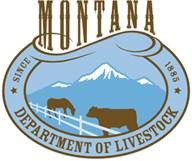Wilsall Cattlewoman Receives National Educator Award
 (Listen to the podcast at the end of this post!)
(Listen to the podcast at the end of this post!)
Suze Bohleen of Wilsall was recently recognized for her volunteer efforts and dedication to beef education by the American National CattleWomen (ANCW) as recipient of the 2014 Outstanding Educator of the Year award at a meeting recently held in Denver, Colorado.
The Educator of the Year award recognizes a member of ANCW who has initiated and participated in innovative and high quality programs in their local units or states in beef promotion and/or beef education. CattleWomen who receive this distinguished honor demonstrate skills in reaching a variety of audiences with creative and timely messages about beef, and show evidence of having made significant impact by telling the beef story. Fellow Montana CattleWomen nominated Bohleen for the annual award.
Across the state of Montana, Suze focuses on classroom beef education for grades 7 through 12. She works with teachers to incorporate materials and demonstrations into curriculum that teaches students how to prepare beef for their family and to make wise, healthy beef choices on a budget.
Bohleen great enjoys working with junior and high school students who, as she describes, are eager for new information and become excited about learning to cook beef. “Dealing with Junior High kids, a guy gave me a new word,” recalled Suze. “We empower them because we don’t treat them like little kids. We tell them what they can do. They can cook and they can help their families.”
Montana CattleWomen President, Wanda Pinnow of Baker, is excited to recognize Suze for her hard work and efforts in beef education. Pinnow commends Suze on her efforts saying, “She has taken our beef education programs leaps and bounds above what they once were due to her teaching background, connections and her love and passion for it.”
Many of the beef education programs conducted by the Montana CattleWomen are supported through grants and funding from the Montana Beef Council and ANCW. “Many Montana ranchers may not realize that 50 cents of their Checkoff dollar stays in the state,” says Pinnow. “Portions of those funds go to educate over 8,000 kids in the state each year, including schools like Missoula, Kalispell, Great Falls and Billings. Suze has played a large role in getting materials into these schools and providing beef education opportunities in many communities.”
When asked why she is committed to CattleWomen programs and beef education, Bohleen said, “I enjoy being a part of the beef community. As a teacher and an educator, I want to make a difference and if I can do that while doing something I believe in passionately then it’s a win-win.”
To learn more about beef promotion and education programs conducted by the Montana CattleWomen, visit their website, MontanaCattleWomen.org, or contact their office in Helena at (406) 442-3420.

















